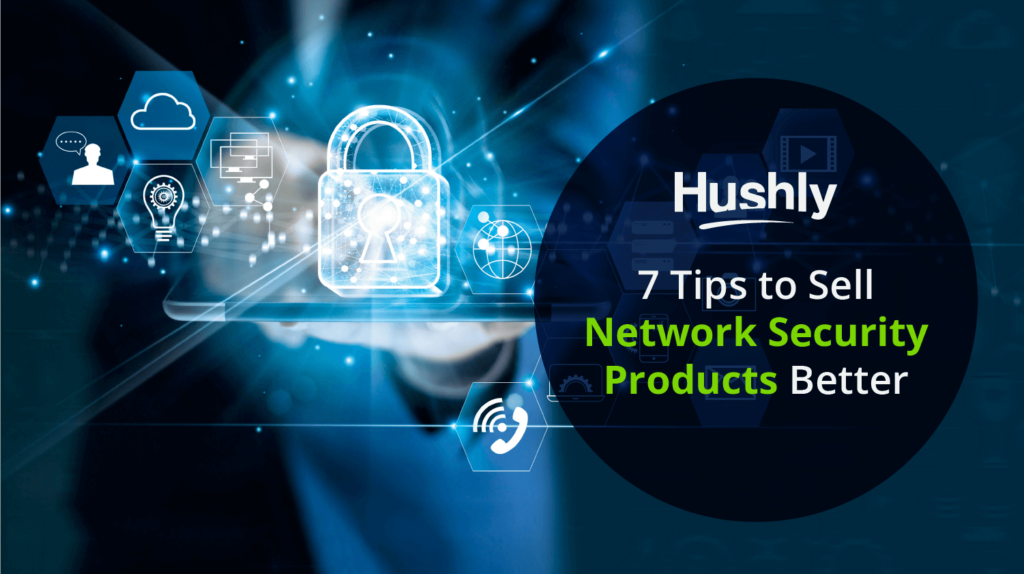Filters
Content Type
Topic
7 Tips to Sell Network Security Products Better
There are many companies promising dreams of 100% effective security measures that can stop all breaches. On top of this, many SMBs don’t understand the value of cybersecurity measures and are unwilling to spend money on a problem they can’t perceive.
To become great at selling network security products, you’ll need to:
- Overcome widespread beliefs that cybersecurity isn’t that important.
- Rise your voice above the snake-oil salesman promising impossible results.
- Connect with clients on a personal level to build trust around an inherently fearful concept.
- Demonstrate knowledge of regulations and laws in a diverse range of industries.
We want to help network security experts learn how to sell security products better by mastering these 7 steps.

How to Sell Network Security Products
No matter what you’re selling, the sales process always boils down to a few key principles:
- Identify pain points and how to evoke them tactfully.
- Earn trust by demonstrating knowledge, personability, and genuine care for the customer.
- Provide specific, actionable solutions that the customer can digest quickly.
Here are 7 ways network security firms can achieve these results more frequently and reliably.
1. Assume Your Customer Knows Little About Cyber Security
Large businesses have traditionally been the targets of cybersecurity attacks. These companies have more data and more valuable information to steal. For criminals, it’s the difference between fishing and whaling.
However, attacks on SMBs are on the rise. According to cybersecurity magazine, 61% of all small and medium-sized businesses have reported at least one cyber attack in the last year.
Despite these risks, 43% of SMBs have 0 cybersecurity protection in place.
In general, you are dealing with a marketplace ignorant of the risks of cyber-attacks. This means that the first step in your presentation should be painting a vivid picture of these risks.
Still, you cannot go overboard. Going too heavy on the fear factor will come off as disingenuous. As important as it is to stoke fear and create pain (so that you can solve it), you must do it in an authentic way.
2. Make Your Presentation About Trust and Protection
When it comes to cybersecurity, the threats are serious enough to create some dire consequences.
This is both good and bad for your sales pitch. Discussing these consequences too frequently can actually come across as disingenuous.
You can spend a whole meeting explaining how a bad cyber attack could put them out of business, but if they don’t believe you (and there’s a good chance they won’t), this will backfire in a big way.
To avoid this, let the numbers speak for themselves without spending too much time hammering at them.
Once you’ve painted the picture of the risks involved, spend lots of time reassuring the prospect that you understand these dangers and how to prevent them. Ensure that the prospect feels like you’re looking out for their best interests first and foremost.
In short:
- Stick to the facts. Never lie or embellish.
- Speak to them on a human level without exaggeration or too much emotion.
- Keep the presentation solution oriented.
- Focus on the value of having your product, not the consequences of lacking it.
If you follow these steps, you’ll avoid seeming as though you’re trying to scare the prospect into a sale.
3. Keep Your Offer Realistic
The average customer will understand that you cannot keep them safe from every threat in perpetuity.
If you explain your product truthfully and authentically, the customer should understand that cybersecurity will always be a game of cat and mouse. There will never be a 0% chance that hackers will invent a new way to attack their system before experts can learn to prevent it.
Be honest about this. Seriously, just come out and say it.
This kind of authenticity is needed when it comes to cybersecurity sales for a few reasons. It will:
- Earn trust from the prospect.
- Set proper expectations.
- Get their attention: brutal honesty like this will literally make them perk up in their seats.
- Give them permission to believe in your authority.
Most importantly, it will give them the impression that you understand these threats on a deep level and how to respond to them.
4. Talk About How You’ll Respond to Incidents
Now that you’ve truthfully explained that not every attack can be prevented in advance, you can begin explaining how you’ll be able to save the day in the event of an attack.
Get specific here. Case studies & client testimonials are your best friends. Explain your process of responding to an attack from start to finish. Make sure your customers know you have a plan in place that will begin automatically.
Give the customer the impression that you’ll always have their back and have gone a long way towards securing the sale.
5. Make Your Pitches Industry-Specific
No one wants a “one-size fits all” solution to cyber security. You need to make your customers feel safe and secure, knowing that you understand their industry from top to bottom. This includes the threats involved and the regulatory and legal requirements they’ll need to meet.
Get comfortable with the regulations for each industry. Design a pitch that speaks directly to these regulations and mentions them by name.
On the security front, make sure you address specific industry pain points that they’re experiencing.
Pro Tip: A great sales discovery process will make this step much easier.
6. Focus on Building Long-Term Relationships with ABM
Account-based marketing is a strategy built around developing long-term, mutually beneficial relationships with your clients.
By committing to mutual growth instead of one-off sales, you can change the nature of B2B transactions into long-term partnerships.
To accomplish this, Hushly maintains a suite of tools and techniques we employ with our clients. A few examples of account-based marketing are:
- Dynamic landing pages that change their appearance and content based on the prospect visiting.
- Content hubs that can display relevant content to educate and provide value up-front.
- Automated ABM emails that can provide value and nourishment to leads with just a few button clicks.
7. Summarize with Objective Benefits
Since you’ve already developed the pain and explained how you would solve that for them, you’ll want to end the presentation by focusing on the objective benefits that your product will provide.
Mention those key regulations by name. Get specific about numbers, long-term value, and your company’s steps to maintain a long-lasting partnership.
Your clients want to feel secure in your product and the people they’re buying from. Make sure you spend time at the end of your presentation reinforcing your company’s willingness to step up to the plate when incidents occur.
Final Tip: Let Hushly Manage your ABM Strategy
The best part of account-based marketing for cyber security is that it doesn’t end when you make the sale. This aligns with the principle of relationship building that we believe in here at Hushly.
Finalizing the first deal is step one in a multi-year process of cultivating trust and partnerships that will allow you to grow as an industry leader.
Let Hushly create a customized demo for you and see how we can begin the process of improving your business relationships and automating your B2B marketing today.

The post 7 Tips to Sell Network Security Products Better appeared first on Hushly.


